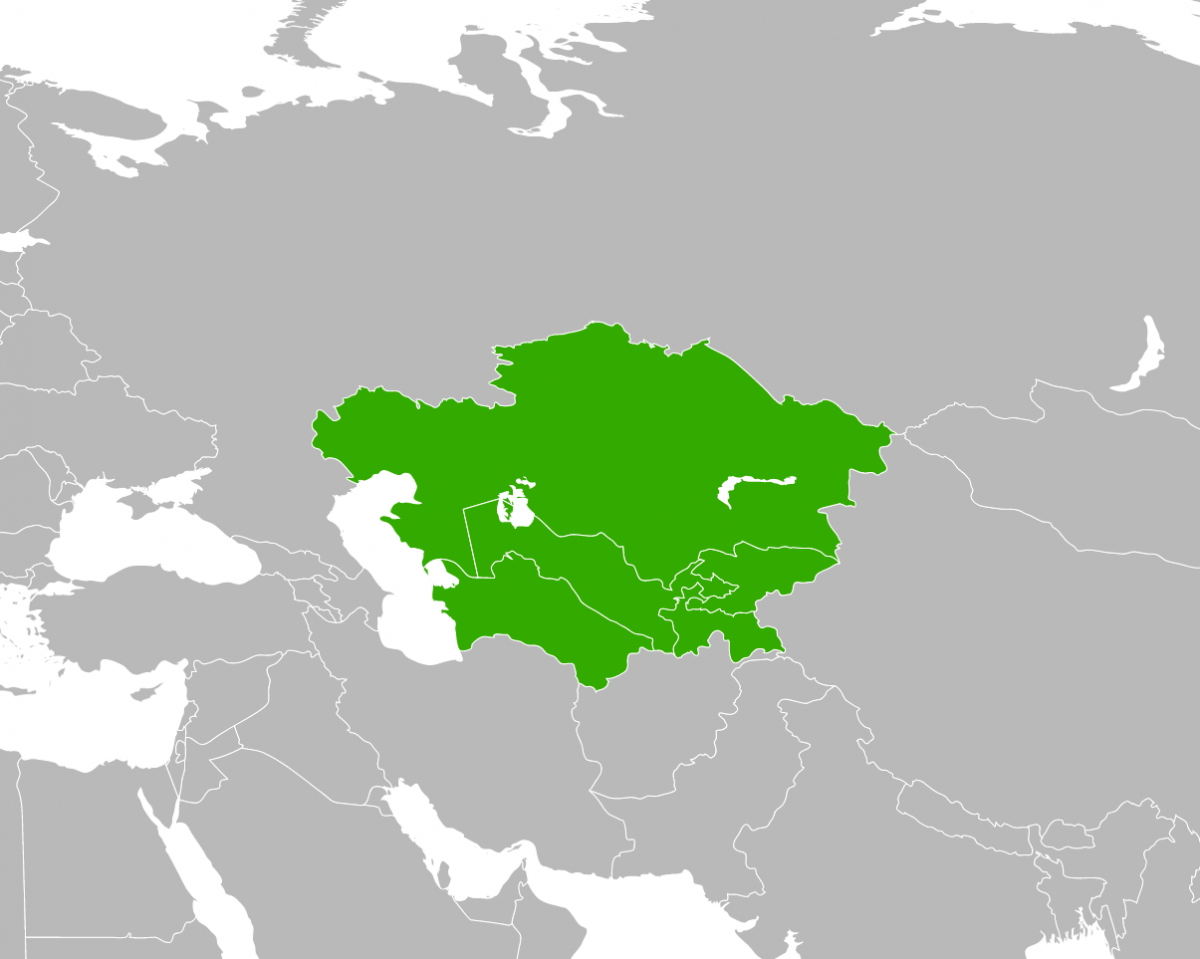Central Asian Nuclear-Weapon-Free Zone Treaty

Visual illustration of the Central Asian NWFZ
Image source: Wikipedia.org
Overview
The Central Asian Nuclear-Weapon-Free Zone (CANWFZ) treaty is a legally binding commitment by Central Asian States (Kazakhstan, Kyrgyzstan, Tajikistan, Turkmenistan, and Uzbekistan) not to manufacture, acquire, test, or possess nuclear weapons. The treaty was signed on 8 September 2006 at the former Semipalatinsk nuclear test site in Kazakhstan, hence the Treaty’s unofficial name as 'Semipalatinsk Treaty'.
The treaty was subsequently ratified by all five Central Asian states and entered into force on 21 March 2009.
The creation of the zone has been the result of the collective efforts by all five Central Asian States in their common desire to provide security, stability and peace in the region, address environmental concerns and create the necessary conditions for regional development and stability.
The State Parties of the CANWFZ have committed themselves voluntarily and unequivocally to ban the production, acquisition and deployment on their territories of nuclear weapons and their components or other nuclear explosive devices.
All verification pursuant to the treaty is carried out by the IAEA, as CANWFZ States Parties are obliged to conclude with the IAEA both a comprehensive safeguards agreement and an additional protocol. The treaty also requires States Parties to act in accordance with the Comprehensive Nuclear‑Test‑Ban Treaty (CTBT) and to “maintain effective standards of physical protection of nuclear material, facilities and equipment.”
The Semipalatinsk Treaty has a number of special features. The zone is the only, among existing zones, situated entirely in the northern hemisphere, in a landlocked region directly bordering two nuclear-weapon States. CANWFZ is the only zone where, in the past, nuclear weapons have not only been tested but also actively deployed.
The idea of creating the zone began in September 1997 at the "Central Asia - a Zone Free of Nuclear Weapons" international conference in Tashkent, Uzbekistan. The signing ceremony of the Treaty on the Zone was held in 2006 in the city of Semipalatinsk, Kazakhstan, where in 1991, one of the world's largest nuclear test sites was closed. The Kyrgyz Republic has since then been officially designated as the depository of the Treaty..
Full text of the Central Asia NWFZ Treaty is available at the UN Disarmament Treaties Database: http://disarmament.un.org/treaties/t/canwfz
Membership
The States Parties to the Treaty are: Kazakhstan, Kyrgyzstan, Tajikistan, Turkmenistan and Uzbekistan.
Internal coordination mechanisms
The CANWFZ Treaty does not establish any institution to implement the denuclearized status of Central Asia, nor are there any pre-existing regional cooperation institutions or mechanisms that could serve as a secretariat for CANWFZ. States Parties have agreed, however, to hold annual consultative meetings of their representatives “to review compliance with the Treaty or other matters related to its implementation.” The meetings are usually hosted and organized by the current chair of the zone, on a rotating basis.

